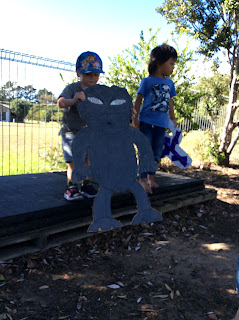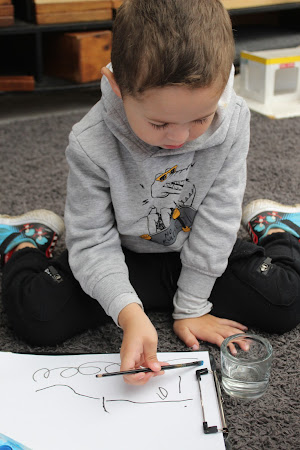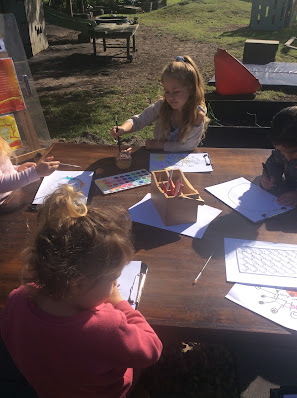"Pūrākau, or storytelling, is an ancient form not just of transmitting ideas but of creating shared meaning and thus identity" (Stansfield, 2020).
To help jumpstart our journey into exploring pūrākau we started with reading the beautiful pukapuka ‘In the Beginning’ by Peter Gossage. Accompanying this book the teachers made story stones of the atua featuring in the story. The tamariki absolutely loved reading about the atua, their guardianship and using the story stones to read and play with.
(Te Whāriki Online).
We are continuing with our exploration into pūrākau and after reading the pukapuka ‘In the Beginning’, the tamariki made props of the atua featuring in the book. The tamariki helped trace, paint and stabilize the child sized atua before they were ready to be used.
During the process to create the atua there was a lot of discussions around the differences, what they do, what people thought of them and other theories about them.
(Te Whāriki, 2017).
Another beautiful pukapuka about atua but this time about wahine. What is especially fantastic about this book is that the author Karlene is the head teacher of Selwyn Kindergarten in Dargaville.
The tamariki have also immensely enjoyed reading this book. The tamariki used their wonderful artist skills to create story sticks so that everyone can enjoy their beautiful mahi.
Papatūānuku is the earth mother, with Ranginui they had many sons. Some of the sons wanted there to be light so push them apart.
Hineahuone is the first atua wahine. She was created out of clay by Tāne Mahuta and was able to start to give life to humans.
Hine-rauwhārangi makes us grow strong and healthy.
Hine-moana looks after the sea creatures. She calms the stormy waters.
Hine Raumati delivers warmth and sunshine. She is the wife of Tama-nui-te-rā.
Hine-teuira is the lightening wahine.
Hine-nui-te-pō is the atua wahine of darkness. She helps guide us to find out tupuna.
“Children experience an environment where they experience the stories and symbols of their own and other cultures. Over time and with guidance and encouragement, children become increasingly capable of recognising print symbols and concepts and using them with enjoyment, meaning and purpose.”
-Te Whāriki, 2017
Arohanui, Lauren.


























%201.png)







































No comments:
Post a Comment